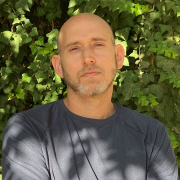Daniel Benhalevy was recently appointed as senior lecturer at the George S. Wise Faculty of Life Sciences, Shmunis School of Biomedical and Cancer Research (2022). He was trained as an undergrad here at the Faculty of Life Sciences in Tel-Aviv University, and obtained his MSc and PhD degrees at the Weizmann Institute of Science. He joined the Shmunis School of Biomedical and Cancer Research after completing postdoctoral studies at the National Institutes of Health in Bethesda Maryland.
Dr. Daniel Ben Halevy

Biography
CV
Education and training
2021-2022 Postdoctoral Research fellow, National Institutes of Health, Bethesda, MD, USA.
2016-2021 Postdoctoral Visiting fellow, National Institutes of Health, Bethesda, MD, USA.
2009-2015 Ph.D., Department of Biological Chemistry, Feinberg Graduate School at the Weizmann Institute of Science.
2006-2009 MSc, Department of Molecular Cell Biology, Feinberg Graduate School at the Weizmann Institute of Science.
2003-2006 BSc (summa cum laude), Tel-Aviv University, The George S. Wise Faculty of Life Sciences Program for Outstanding Students.
Academic Appointments
2022-present Assistant Professor, Tel-Aviv University
Research Interests
Bigger picture
All the cells in our body have the same DNA, the same genes, and yet they are very different from each other. These differences rise from how each cell expresses its genes. Therefore, to understand how cells function and fail it is crucial to understand how gene expression is regulated and executed.
Questions we study aim to understand how regulation of gene expression is changing in disease, and to find ways we could modulate gene expression to alleviate disease.
We study post-transcriptional gene regulation
Basic concepts are established regarding how RNA production based on DNA code is regulated (transcriptional gene regulation). But genes are also heavily regulated at multiple steps after transcription such as RNA processing, nuclear export, translation, and RNA degradation (post-transcriptional gene regulation), where basic principles are not well understood. Our lab is interested in how RNA Binding Proteins and non-coding RNAs orchestrate post-transcriptional gene regulation.
Zooming in to subcellular resolution
The same RNA Binding Protein may act at distinct cellular locations to regulate different steps along the mRNA life cycle. This can happen concurrently at the same time by separate subpopulations of the same RBP, or alternatively RBPs may shuttle between compartments in response to a signal or in disease.
So, to really understand post transcriptional gene regulation we zoom-in on subcellular compartments, capture a specific subpopulation of an RNA Binding protein and its associated RNA and protein counterparts, and aim to study their function in context of their encompassing compartment, whether it be the function it fulfills or the molecular signals within it.
To do this we combine:
- Cell biology and quantitative viewpoints.
- Molecular, biochemical, and genetic tools.
- Advanced transcriptomics (RNA sequencing, ribosome footprinting, PAR-CLIP, Proximity-CLIP).
- Diverse bioinformatic data analyses.
Selected Publications
Benhalevy, D., Anastasakis, D, Hafner, M. Proximity-CLIP provides a snapshot of protein-occupied RNA elements in different subcellular compartments. Nature Methods. 2018 November 26. This paper was featured in nature reviews genetics and in GenomeWeb.
Benhalevy D*, Gupta SK*, Danan CH, Ghosal S, Sun HW, Kazemier HG, Paeschke K, Hafner M, Juranek SA. The Human CCHC-type Zinc Finger Nucleic Acid-Binding Protein Binds G-Rich Elements in Target mRNA Coding Sequences and Promotes Translation. Cell Rep. 2017 Mar 21;18(12):2979-2990.
Benhalevy D*, Biran I*, Bochkareva ES, Sorek R, Bibi E. Evidence for a cytoplasmic pool of ribosome-free mRNAs encoding inner membrane proteins in Escherichia coli. PLoS One. 2017 Aug 25;12(8):e0183862.
Benhalevy D*, Bochkareva ES*, Biran I, Bibi E. Model Uracil-Rich RNAs and Membrane Protein mRNAs Interact Specifically with Cold Shock Proteins in Escherichia coli. PLoS One. 2015 Jul 30;10(7):e0134413.
Lev S, Ben Halevy D, Peretti D, Dahan N. The VAP protein family: from cellular functions to motor neuron disease (*review). Trends Cell Biol. 2008 Jun;18(6):282-90.
Anastasakis D*, Benhalevy D*^, Hafner M^. Proximity-CLIP and expedited Non-Radioactive library preparation of Small RNA footprints for Next-Generation Sequencing (invited). Curr Protoc Mol Biol. 2020 Jun.


